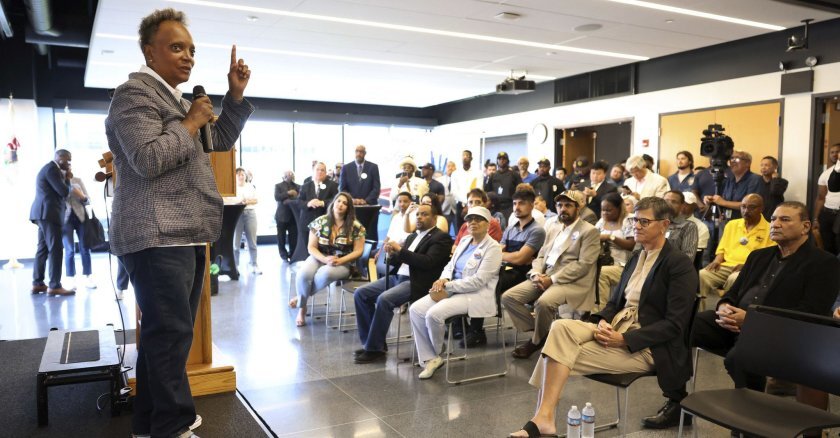Or, to be more specific, suppose you work for the city of New York and you read one morning that the mayor has been indicted on charges of bribery, conspiracy, wire fraud and soliciting illegal campaign contributions, as has happened in the case of Mayor Eric Adams.
There are several ways you might react to that. You might quit your job to reflect your disgust. Or, perhaps more plausibly, you might stay on the job but slow down your performance in tandem with your disillusionment. Or you could keep your head down and work exactly as you had been doing before.
The overwhelming likelihood is that you will choose the third option. Partly, of course, it’s just a matter of self-preservation. But beyond that, sticking to the job is a variation on what psychologists call path dependence. Routines that become entrenched tend to perpetuate themselves even in the presence of evidence that might disrupt them. That can apply to bureaucratic performance just as it does to other entrenched institutions and practices, most famously the continuing use of the hopelessly inefficient QWERTY keyboard on computers and typewriters.
I can’t prove that path dependence is what keeps government agencies plugging along in the light of top-level malfeasance, but it’s the most logical explanation. The state workforce in Illinois has been subjected in recent decades to an almost unbelievable streak of misconduct by governors: Four of the last 10 have actually gone to prison. But I’ve heard nothing to suggest that state employees have stopped doing their jobs, or done them less conscientiously than before. You have a job, you just keep doing it, no matter what outrage the governor or the mayor may have perpetrated.
If I’m right, it may suggest to you that it makes little difference to the functioning of a large government entity who the leaders are or what they do; the government is about the same no matter what happens at the top. In fact, though, we all know that’s not exactly true. Since we have been referring to New York, it’s fair to point to a couple of its recent mayors who, despite some serious flaws, moved their massive governments in important new directions.
Rudy Giuliani was an arrogant egomaniac, but he galvanized the police department and forced crime rates down, and they have mostly stayed there in the 23 years since he left office. Michael Bloomberg alienated much of the city in demanding a previously illegal third term, but he used that term to push through development that changed the face of Manhattan and the other boroughs as well. A half-century earlier, as an unelected but powerful public official, Robert Moses single-handedly redrew the map of the entire city.
So when are leaders relevant, and when are they simply window dressing at the top of the bureaucratic pyramid? That turns out to be a devilishly complicated question. The truth is that, bureaucratic stability aside, New York City has actually been doing pretty well economically in the years since Adams took office, notwithstanding his dismal approval ratings. Maybe he hasn’t mattered all that much.
IT’S REVEALING TO LOOK BACK in the American political past and discover that for most of the nation’s history, political leaders weren’t expected to be activists or entrepreneurs at all. This was true at the federal level and at lower levels as well. The federal government delivered the mail and maintained a modest peacetime military establishment, presidents were mostly caretakers, and the public was generally satisfied with that. Only during times of crisis, such as the Civil War, were they judged on the active leadership they provided.
That changed in the 20th century, and it changed with the activism of three presidents who were not content to function as caretakers. Theodore Roosevelt formulated a program of corporate regulation and got most of it enacted by the time he left office. His cousin Franklin came into power in the depths of the Depression promising to do something to end it, and while he did not entirely succeed, he established a template that every president since has had to come to terms with. Woodrow Wilson was, in domestic policy, a progressive activist president in the Roosevelt mold. In his first two years, he managed a dramatic assertion of federal power, rewriting the tariff code, creating new agencies to combat monopoly and establishing the Federal Reserve banking system.

(Wikimedia Commons)
But it wasn’t the federal government that Wilson changed most dramatically. It was the office of governor in the United States. Prior to Wilson’s arrival as chief executive in New Jersey in 1911, governors rarely had agendas; they simply passed judgment on the product that their legislatures gave them. Wilson took office vowing to do four things: implement school reform measures, pass a primary election law, enact a tough bill to rein in corrupt political practices, and push through a public utilities law. He did them all.
And more than that, he created a new national perception of how governors are supposed to behave. By and large, voters stopped expecting them to sit benignly in the governor’s mansion and watch what the legislature was up to. There were other activist governors in the progressive era: Hiram Johnson in California and Robert La Follette of Wisconsin are important examples, but it was Wilson who set the standard for what an American governor was placed in power to do.
The result of all this pathbreaking activism, roughly a century later, is that governors and presidents are supposed to initiate programs to solve virtually every problem their constituents face and are evaluated at election time on how much progress they have made. Voters expect their political leaders to control inflation and temper unemployment, and they hold them accountable if those conditions aren’t met. Economists nearly all insist that political leaders can’t do much to manage the national economy or the economic conditions within a state — but they are judged on that basis nevertheless. Those are expectations that we can trace back, with a fair degree of accuracy, to the early 20th-century progressives, and more specifically to the Roosevelts and Woodrow Wilson. Today’s leaders ignore those expectations at their peril.
Perhaps the most blatant recent example of false expectations bringing down a competent political leader was the removal from office by California’s voters of Gov. Gray Davis, in 2003, in response to escalating utility costs for which he was in no way responsible. Those cost fluctuations were created by the corrupt energy behemoth Enron, for entirely amoral reasons. But Davis was expected to solve the problem, and he paid the price for its persistence.
POLITICAL LEADERS DO MAKE A DIFFERENCE, even if we ask more of them than they can reasonably deliver. But in the end the most important difference they make may not be in the creation of an agenda or in the performance of the public bureaucracy. It may be in the protection of the public trust.
It is no secret that citizen confidence in America’s public institutions has declined dramatically since the 1960s, not just trust in political players such as legislators and governors but in ostensibly non-political entities such as the police, the military and the courts. The scandals that have engulfed all these institutions have had a cataclysmic effect on the public’s faith in the government that surrounds it. They have contributed heavily to the partisan and ideological rancor that currently prevails at virtually every level of the political system. Successful societies run on public trust, and right now we have a serious shortage of it.
At the state level, there are a few notable examples in recent years of political leaders restoring in some measure a climate of trust in the public enterprise they are heading. Perhaps the most visible one was accomplished by Jerry Brown when he returned as governor of California for his third term in 2011 at the age of 72.
Brown has always had his foibles and eccentricities, but he clearly knew what he was doing, and that seemed to have a clear effect on the state government and the mood of most of the citizenry as well. His unflinching bluntness and occasional rudeness imparted a sense that he was honest and candid and refused to put up with anything less in the public officials around him. His reputation gave him the political strength to enact a needed tax increase and stabilize the state budget for the first time in years. I know I’m neglecting several other recent governors who have done well in the trust department, but Jerry Brown stands out.
Maybe this is a special case; I don’t know. But it would make sense for our current leaders to pay some attention to it. In today’s political world, governors and mayors need to have policy agendas and avoid alienating the public bureaucracy. But restoring the public trust may be the most important job that faces them.
Related Articles














